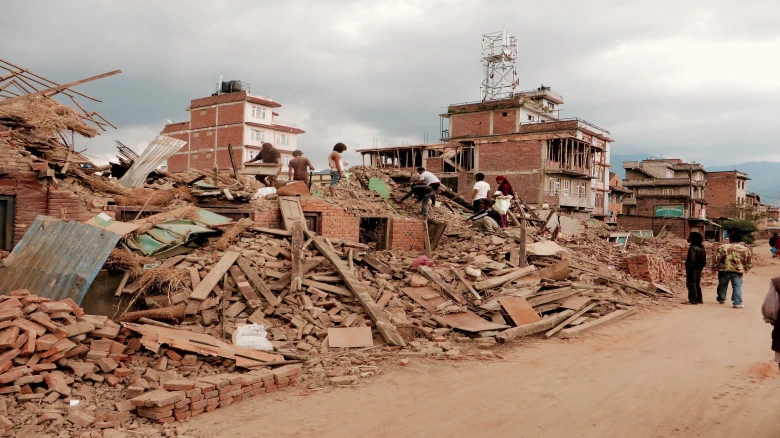International

Digital Desk: On
Sunday morning, an earthquake with a magnitude of 6.0 struck Nepal.
According to the
National Earthquake Monitoring and Research Centre, the earthquake struck Nepal
at 8:13 a.m. IST near Martim Birta in the Khotang district, 147 kilometres to
the east-southeast of Kathmandu (NEMRC).
The epicentre's depth was observed at a distance of 10 km in
eastern Nepal, where it was found to be at a latitude and longitude of 27.14
degrees North and 86.67 degrees East.
As of now, no injuries or damages have been recorded.
The recent earthquakes in Nepal, which have resulted in
unparalleled loss of life and destruction of property, have made it necessary
to develop well-thought-out policy measures to deal with such calamities.
On April 25, 2015, a powerful earthquake with a magnitude of 7.8
on the Richter scale struck central Nepal between Kathmandu, the country's
capital, and Pokhara. 8,964 people are thought to have died and close to 22,000
injured, according to estimates.
The Gorkha earthquake, which also affected several towns in
north India, as well as Lahore, Pakistan, Lhasa, Tibet, and Dhaka, Bangladesh,
also felt tremors.
The earthquake forced the closure of Kathmandu's
international airport.
On Mount Everest, the earthquake also caused an avalanche
that claimed 22 lives. On May 12, 2015, a significant aftershock occurred; its
epicentre was close to the Chinese border between Kathmandu and Mount Everest.
According to estimates, this earthquake left more than 2,500 people injured and
over 200 people dead.
In 1934, Nepal experienced its most severe earthquake on
record. The cities of Kathmandu, Bhaktapur, and Patan were all destroyed by the
8.0 magnitude earthquake.
Leave A Comment